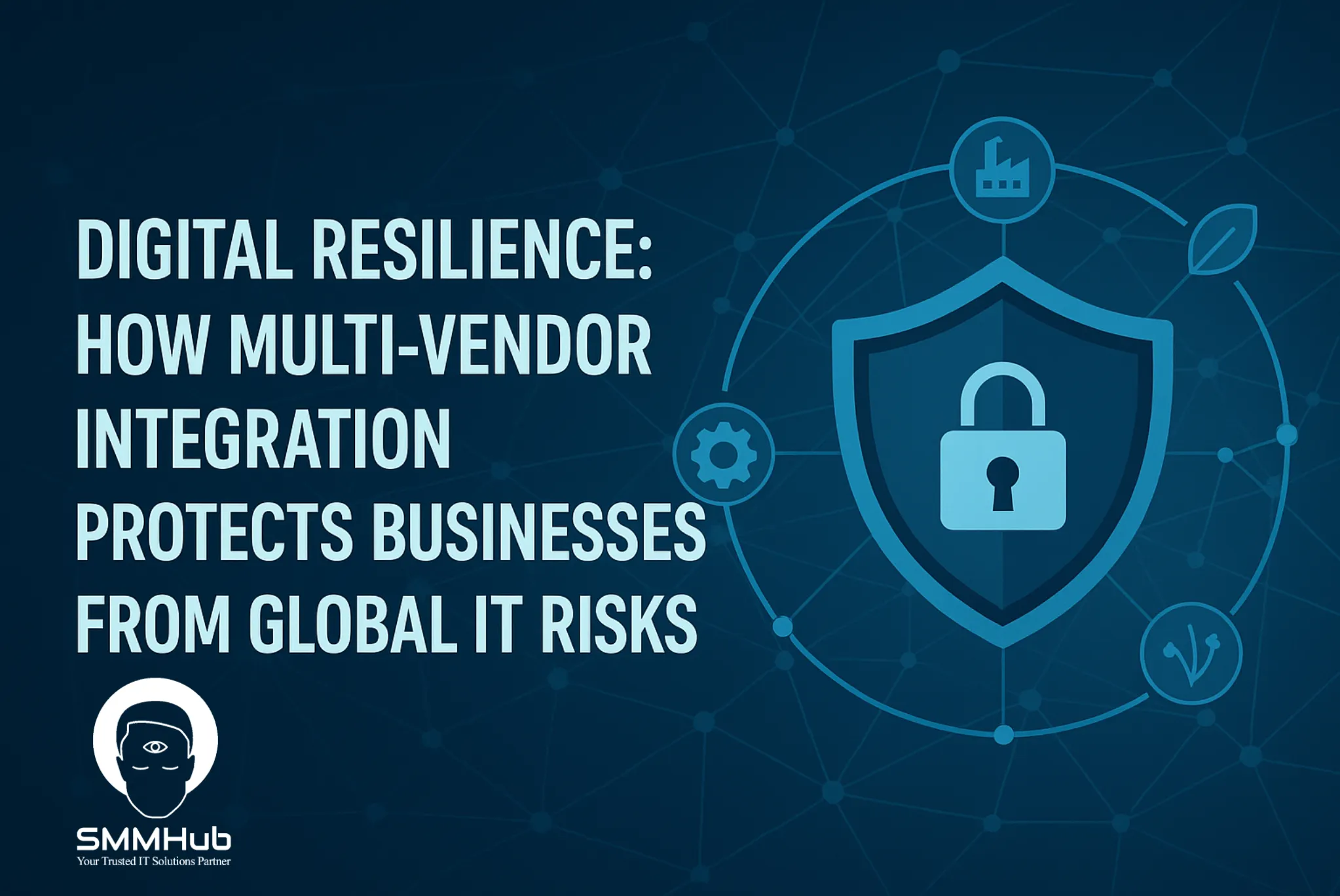In an era where cyberattacks, supply chain disruptions, and geopolitical tensions can destabilize entire industries within hours, digital resilience has become the new foundation of corporate survival. For modern enterprises, success is no longer measured only by innovation — it depends on the ability to adapt, recover, and continue operations despite global IT challenges.
At SMMHub LLC, we believe that true digital resilience comes from integration — the intelligent coordination of multiple vendor ecosystems into one secure, scalable, and efficient IT strategy.
The Age of Interconnected Vulnerabilities
Modern infrastructures are no longer monolithic. A single enterprise today operates across multiple technologies and ecosystems:
-
Servers from Dell or Lenovo,
-
Firewalls and network security from Fortinet or Palo Alto,
-
Cloud and software ecosystems from Microsoft and Oracle,
-
Monitoring and incident response from Trellix or RSA NetWitness.
While each vendor provides best-in-class capabilities, these solutions are often developed in isolation — creating complexity, configuration gaps, and security blind spots.
A cyberattack exploiting one vendor’s weakness can cascade across the entire digital infrastructure.
That’s why integration, not isolation, defines the future of IT resilience.
Why Multi-Vendor Integration Is a Shield, Not a Burden
A unified, well-orchestrated vendor ecosystem is the digital equivalent of an immune system — every element reinforces another.
At SMMHub, we build frameworks where technologies from different vendors communicate, share intelligence, and respond collectively. This approach delivers:
-
Continuity – ensuring no single vendor failure can paralyze critical operations.
-
Visibility – integrated analytics across endpoints, servers, and networks.
-
Compliance – harmonized policies that meet international and local security standards.
-
Agility – rapid onboarding of new technologies without disrupting existing systems.
Multi-vendor integration transforms complexity into coordinated resilience — and that’s the real competitive advantage.
SMMHub’s Approach to Building Digital Resilience
SMMHub operates as a multi-vendor systems integrator — not just a reseller.
Our role is to design, implement, and synchronize the best technologies from global IT leaders.
Through active partnerships with Fortinet, Dell, Oracle, Microsoft, Palo Alto, Lenovo, Huawei, Trellix, ESET, and RSA NetWitness, we ensure that every client solution is not only cutting-edge, but also strategically unified.
Our methodology includes:
-
Cross-vendor architecture design — ensuring compatibility and operational synergy.
-
Vendor certification management — maintaining technical excellence and compliance.
-
Centralized monitoring & escalation channels — coordinating response across vendors and distributors.
-
Lifecycle continuity — from procurement and deployment to ongoing security and renewal management.
In practice, this means that when an incident occurs, response time is shorter, visibility is higher, and risks are neutralized faster — across every layer of the infrastructure.
Resilience as a Strategic Investment
Businesses often treat cybersecurity or vendor management as cost centers.
In reality, resilience is an investment — one that protects business continuity, client trust, and long-term reputation.
A multi-vendor strategy does not increase complexity; it increases intelligence.
It allows organizations to leverage each vendor’s strengths — and mitigate weaknesses through integration.
With geopolitical risks, regulatory pressures, and rapid digitalization reshaping markets, companies that adopt multi-vendor resilience today are future-proofing themselves against tomorrow’s uncertainties.
Conclusion
Resilience is no longer optional.
It is the strategic DNA of every modern organization that seeks to survive — and thrive — in an unpredictable IT world.
At SMMHub LLC, we go beyond integration — we build digital ecosystems that think, adapt, and protect.
Because in today’s reality, the strongest business is not the one with the most technology —
but the one where every technology works together.




